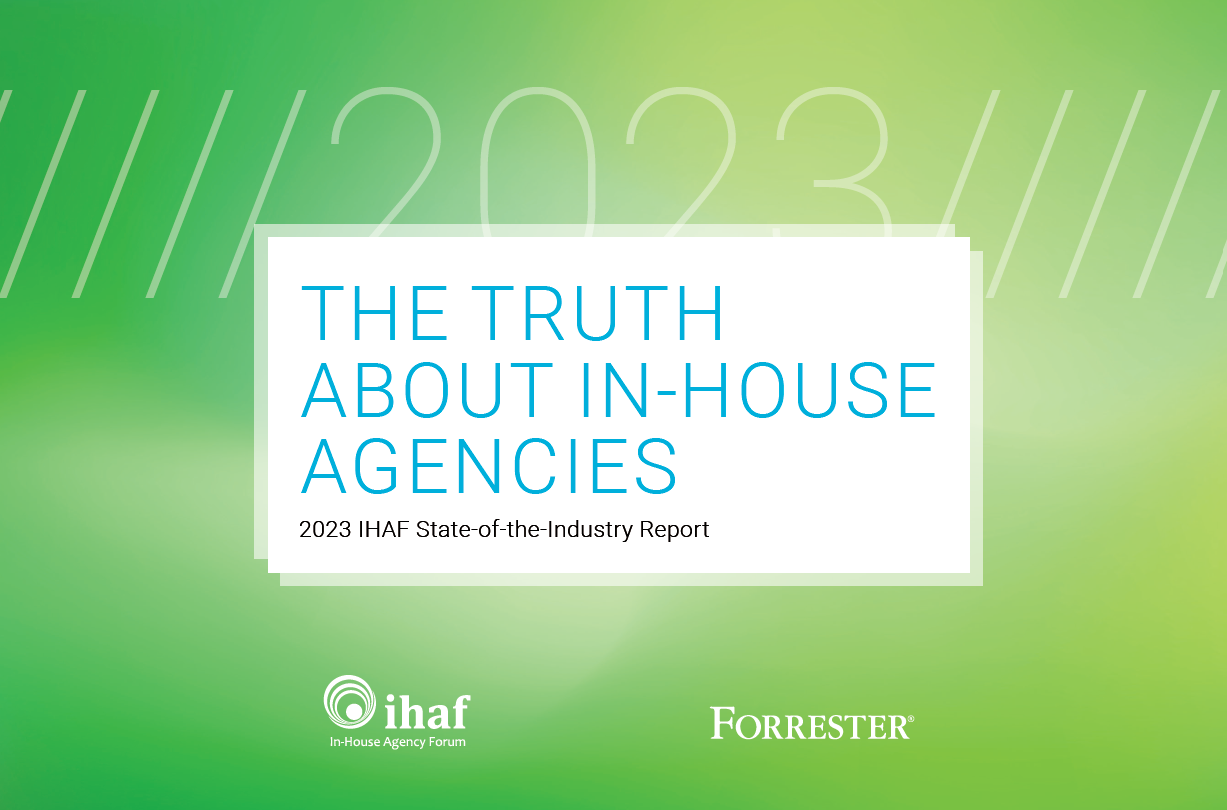Strengthening Marketing/Creative Alignment to Drive Revenue

Creative content is more valuable than ever—in fact, 71% of consumers say they’ll choose a product or service over its competitors because of good design. So it’s no wonder savvy business leaders are increasing investments in their in-house creative teams. But there’s a challenge. In today’s incredibly crowded digital world, engaging consumers to deliver a return on those investments is becoming much harder. For creative teams, the solution is more highly targeted, highly personalized content and campaigns in market—and in-house leaders will need to strengthen their strategic partnership with marketing to make it happen.
Break Out of the Silos
In-house creative leaders and their marketing counterparts already recognize their shared goals, and the essential roles their teams play in accomplishing them: creative produces remarkable content that captures audience attention and marketing ensures it resonates, with targeted strategies for reaching the right segments across the right channels. And while most already know that operating in harmony results in better alignment between their teams and more successful content and campaigns, to drive continuous engagement, they need to break out of their silos even further, with marketers becoming more design-driven and creatives becoming more data-driven.
Start by encouraging marketing leadership to think about design as a critical tool that should be fully integrated into the overall strategy and factor in to both teams’ day-to-day operations. Charge marketing and creative alike to ideate on how to leverage design most effectively by continuously reinforcing the vital role it plays in forging connections with consumers.
A great example is IBM’s Chief Technology Officer Charlie Hill’s explanation of the value of design in consumer relationships at a recent roundtable discussion on design-led businesses: “Digital is removing the friction between consumer and company. We need to establish intimacy because if customers don’t get it, they go elsewhere.”
At the same time, it’s essential for creative leaders to put more stock in data. Break out of the traditional model that places data and analysis solely in the marketing sphere: Take a more active role in gathering and reviewing consumer feedback and insights, and use them to inform creative decisions that will make future content and campaigns even stronger.
The Drum published a piece recently featuring DigitasLBi Chief Technology Officer Scott Ross sharing how his creative team is increasingly its use of data to test ideas or “hypotheses” before launching campaigns—and the results have been more-effective messaging overall. “Data is important in backing up the gut instinct that you’re always going to have with creative,” said Ross.
Drive Efficiency with Strategic Intake
While marketing and in-house creative leaders should absolutely encourage their teams to be driven by both design and data, they’ll also need to keep delivering more content and campaigns to market, quickly, if they want to compete for audience attention. To do that, they’ll need to align on a comprehensive workflow that fosters efficiency on both sides. Start by critically evaluating the quality of your intake process, often the original source of marketing/creative inefficiency. Consider this: A recent Visually report found that fewer than 30% of marketers think creatives follow briefs well—and under 25% of creatives think marketers do a good job briefing them in the first place. Open up a candid dialogue with marketing to surface friction or misalignment between your teams and strategize how to solve one another’s issues at the opening stages of a project. The most efficient intake processes make it easy for marketing to communicate the essential information creative needs to produce a deliverable that accomplishes the project goal. Work with your marketing counterparts to establish what team members should have what roles and responsibilities during the briefing process. Also consider formalizing how critical information is shared between your teams at project launch, like implementing a series of brief templates tailored to different kinds of content or campaigns. Get out ahead of headaches at project launch, you’ll reduce misalignment and miscommunication and move projects through your workflow faster and easier.
Productively Collaborate During Review Cycles
For marketing and creative teams to effectively deliver engaging content at the volume required by the new multi-channel world, productive collaboration—or communicating, sharing information, and working together as efficiently as possible—is essential. And it’s the responsibility of marketing and creative leaders to ensure it’s happening throughout the creative production process—but most critically during review and approval. According to The Creative Group, in-house creatives cite unproductive approval processes as their biggest barrier to success, thanks to familiar challenges like unclear feedback, hard-to-manage proof routing, and slow review cycles.
Work with marketing to reduce the frequency of bottlenecks caused by proofs getting lost or stalled with reviewers: Establish a clear routing chain, standardize how content is shared, and align on expectations for the review process. If you’re looking to speed time to approval, consider how easy it is for marketing team members to clearly communicate feedback. Make sure it’s simple for them to annotate proofs. Ask your team questions, collaborate with one another and quickly reach consensus. Also, ensure there’s a process for recording feedback and approval statuses so managers can easily gather, triage and route comments. All these steps will lower the likelihood of miscommunication or mistakes and get more engaging content to market faster as a result.
A strong, strategic partnership between in-house creative leaders and their marketing counterparts results in success for both teams, allowing them to produce more targeted, design-driven content and campaigns that enable better engagement and increased revenue. Unite your teams with a comprehensive workflow that fosters efficiency and collaboration, and you’ll not only meet the demands of this new automated-marketing machine, you’ll thrive with more fresh, targeted content to drive ROI for your organization.
Alex Withers is Chief Marketing Officer with IHAF member, inMotionNow—a leading provider of workflow management solutions for marketing and creative teams. Teams that streamline their workflow with inMotion shorten project lifecycles by 85% and get more revenue-driving content to market. Find out how your team can see the same results.
- advertising,
- agency,
- association,
- automation,
- brand,
- briefing,
- client,
- collaboration,
- CMO,
- communication,
- content,
- corporate,
- creative,
- design,
- digital,
- efficiency,
- engagement,
- IHAF,
- in-house,
- inmotion,
- inmotionnow,
- insource,
- internal,
- leadership,
- management,
- marketing,
- media,
- membership,
- networking,
- process,
- productivity,
- professional,
- project,
- social,
- strategic,
- team,
- trends,
- withers,
- workflow
Recent Posts

In-House Data: Fact or Fiction?
October 16, 2023
I’m going to be honest with you, which I always am but this time it’s scary honesty. There are a lot of in-house agency research reports out there. And not all of them contain data that are close to the integrity of the studies IHAF publishes—the next of which drops at the IHAF conference on …

IHAF Wrapped
December 20, 2023
One of our favorite things to do at year-end is look back at the events, presentations, and online resources our members tapped most. (Why should Spotify have all the fun?) Here are a few of your favorites in 2023:
• New Assortment of Org Charts Download • Updated Job Profiles …



















%20(1).pdf%20-%20Copy.jpg)

%20(1).png)


No Reader Comments